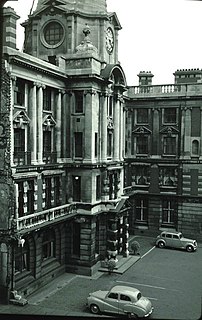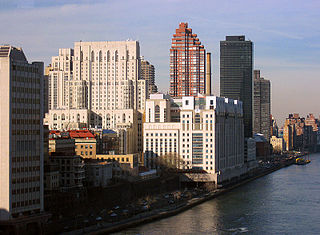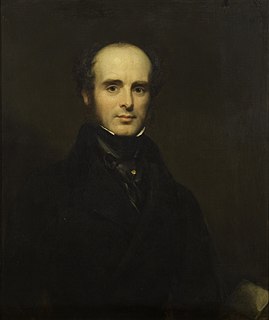

The General Dispensary, Aldersgate Street, was a London dispensary which provided outpatient treatment and home-visiting for sick adults and children.


The General Dispensary, Aldersgate Street, was a London dispensary which provided outpatient treatment and home-visiting for sick adults and children.
By 1700, a few London dispensaries were opened and endorsed by the Royal College of Physicians when a number of physicians returned after the fire of London after fleeing London from the Great Plague of 1665 and when an increasing number of apothecaries were treating the poor, resulting in competition. The situation changed after the Rose case. [2] [3] Eighteenth century London witnessed not just a building boom and extension of the city boundaries, but also a steep rise in poverty. By the end of the century, birth rates exceeded death rates and the population of London was 675,000 in the early part of the century and 900,000 in 1801. Public money spent on the poor increased disproportionately to the rise in population and reliance was put upon medical relief from private voluntary associations and philanthropy. In addition, the number of London hospitals increased but treatment was confined to within their walls and an unmet need for outpatient care of the poor contributed to the rise of the London dispensary. [4]
Following the popular dispensary opened within the Royal College of Physicians building at Warwick Lane and despite its closure in 1725, around 100 men provided the influence to create the General dispensary at Aldersgate street. [4]
The dispensary was situated at 36 Aldersgate Street, a building that had been built for the Marquis of Dorchester and subsequently became "Dorchester House". It later became the City of London Lying-in Hospital before being used as dispensary. [5]
It was founded in 1770 [6] and opened by John Coakley Lettsom. [7]
James Sims was one of the physicians. [4] [5]
It was well organised, well staffed and soon became successful. [4] Both physicians and apothecaries were hired. [7]
The dispensary was also known as the Aldersgate dispensary and renamed in 1844 as the Royal General dispensary. Six years later, the premises moved to 25 Bartholomews Close where it stood just shy of 30 years before being rebuilt. This new building was destroyed during the Blitz in 1941 and its workings continued at St. Bartholomew's hospital until 1948, when the dispensary came to an end. [6]
It later became Shaftsbury House. [8]

Elizabeth Garrett Anderson was an English physician and suffragist. She was the first woman to qualify in Britain as a physician and surgeon. She was the co-founder of the first hospital staffed by women, the first dean of a British medical school, the first woman in Britain to be elected to a school board and, as mayor of Aldeburgh, the first female mayor in Britain.

Royal Brompton Hospital is the largest specialist heart and lung medical centre in the United Kingdom. It is managed by Guy's and St Thomas' NHS Foundation Trust.

Manchester Royal Infirmary is a hospital in Manchester, England, founded by Charles White in 1752. It is now part of Manchester University NHS Foundation Trust, sharing buildings and facilities with several other hospitals.

The Public Dispensary of Edinburgh was the first free-of-charge hospital in Scotland.

The Ancoats Hospital and Ardwick and Ancoats Dispensary was a large inner-city hospital located in Ancoats, to the north of the city centre of Manchester, England. It was built in 1875, replacing the Ardwick and Ancoats Dispensary that had existed since 1828. The building is now Grade II listed.

William Marsden was an English surgeon whose main achievements are the founding of two presently well-known hospitals, the Royal Free Hospital and the Royal Marsden Hospital.

John Coakley Lettsom was an English physician and philanthropist born on Little Jost Van Dyke in the British Virgin Islands into an early Quaker settlement. He was the son of a West Indian planter and an Irish mother. He grew up to be an abolitionist. He founded the Medical Society of London in 1773, convinced that a combined membership of physicians, surgeons and apothecaries would prove productive. As the oldest such in the United Kingdom, it remains as a forum for all branches of medicine, housed in London's medical community at Lettsome House, Chandos Street, near Cavendish Square. Lettsom was its mainstay, as founder, president and benefactor.

St Mark's Hospital is a hospital in Harrow, Greater London, England. Managed by London North West University Healthcare NHS Trust, it is the only hospital in the world to specialise entirely in intestinal and colorectal medicine and is a national and international referral centre for intestinal and colorectal disorders. It is the only hospital in the UK, and one of only 14 worldwide, to be recognised as a centre of excellence by the World Organisation of Digestive Endoscopy.

Sir Alfred Baring Garrod was an English physician.

A hospital is a health care institution providing patient treatment with specialized health science and auxiliary healthcare staff and medical equipment. The best-known type of hospital is the general hospital, which typically has an emergency department to treat urgent health problems ranging from fire and accident victims to a sudden illness. A district hospital typically is the major health care facility in its region, with many beds for intensive care and additional beds for patients who need long-term care. Specialized hospitals include trauma centers, rehabilitation hospitals, children's hospitals, seniors' (geriatric) hospitals, and hospitals for dealing with specific medical needs such as psychiatric treatment and certain disease categories. Specialized hospitals can help reduce health care costs compared to general hospitals. Hospitals are classified as general, specialty, or government depending on the sources of income received.
Sir John Colbatch was an English apothecary and physician. Beginning as an apprentice, rising through freeman to master apothecary in the Worcester Mercer's Company, he went to London in the early 1690s.

Sir William Selby Church, 1st Baronet, was a successful British physician to St Bartholomew's Hospital, president of the Royal College of Physicians from 1899 to 1905 and president of the Royal Society of Medicine from 1907 to 1909 and also in 1893. He is best remembered for his ability to direct policy of the associations he belonged to.

James Hope (1801–1841) was an English physician. He has been called "the first cardiologist in the modern sense". He is known for discovering the early diastolic murmur of mitral stenosis in 1829.

Rose v Royal College of Physicians, also known as The Rose Case, was a 1703 British landmark court case between the Royal College of Physicians (RCP) and William Rose, a Liveryman of the Society of Apothecaries. Rose had treated a John Seale, who complained about his treatment to the RCP, who brought a successful court action against Rose in 1703. The Society of Apothecaries and Rose successfully appealed against this judgement. However, this did not change medical practice but merely legitimised what apothecaries were doing already and confirmed the "status quo". It did, nevertheless, symbolize the decline in the College's growing legal monopoly over who practises medicine. The case was ultimately seen as not one between a College and one individual, but one between one powerful College against one powerful Society.

The Warwick Lane dispensary, also known as the London Dispensary for the Sick Poor, was a dispensary planned by the Royal College of Physicians in 1688 and opened in 1698 within the College's laboratory in Warwick Lane. Medical advice and medications were given free of charge to the poor. Following the Rose case and opposition from apothecaries, it eventually closed in 1725.
Jonathan Toogood (1784-1870) MRCS 1804, FRCS 1843, LRCP 1844 was a surgeon from the south west of England who founded the Bridgwater Infirmary in Somerset in 1813. He held strong views on many issues of the time, including the role of coroners, the Poor Law Amendment Act 1834, Homeopathy and regulations regarding the sale of arsenic.
Extramural medical education in Edinburgh began over 200 years before the university medical faculty was founded in 1726 and extramural teaching continued thereafter for a further 200 years. Extramural is academic education which is conducted outwith a university. In the early 16th century it was under the auspices of the Incorporation of Surgeons of Edinburgh (RCSEd) and continued after the Faculty of Medicine was established by the University of Edinburgh in 1726. Throughout the late 18th and 19th centuries the demand for extramural medical teaching increased as Edinburgh's reputation as a centre for medical education grew. Instruction was carried out by individual teachers, by groups of teachers and, by the end of the 19th century, by private medical schools in the city. Together these comprised the Edinburgh Extramural School of Medicine. From 1896 many of the schools were incorporated into the Medical School of the Royal Colleges of Edinburgh under the aegis of the RCSEd and the Royal College of Physicians of Edinburgh (RCPE) and based at Surgeons' Hall. Extramural undergraduate medical education in Edinburgh stopped in 1948 with the closure of the Royal Colleges' Medical School following the Goodenough Report which recommended that all undergraduate medical education in the UK should be carried oy by universities.

Francis Bernard was an English apothecary, astrologer and physician, known for a large medical library.

William Heath Strange founded the Hampstead General Hospital on the site now occupied by the Royal Free Hospital.